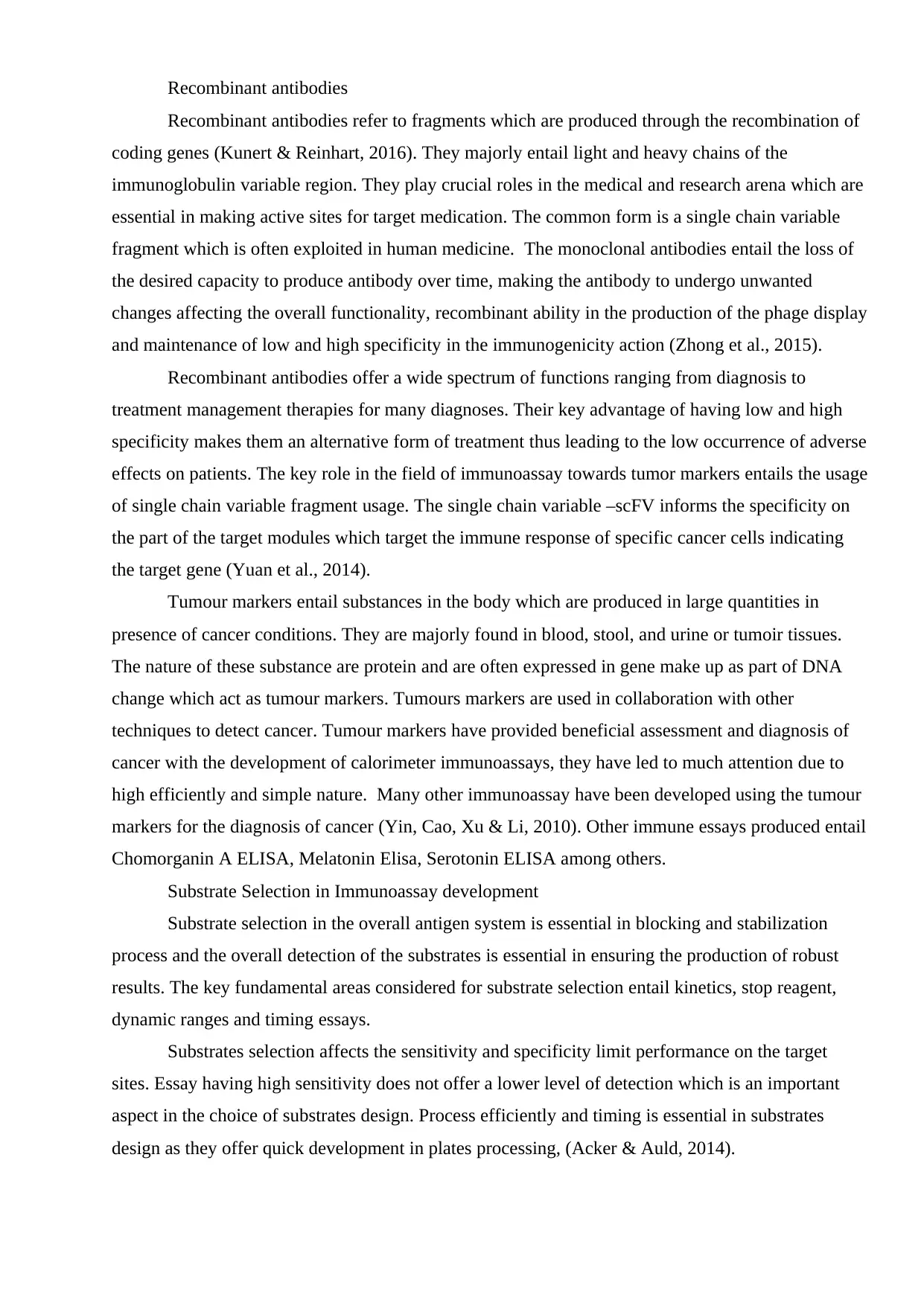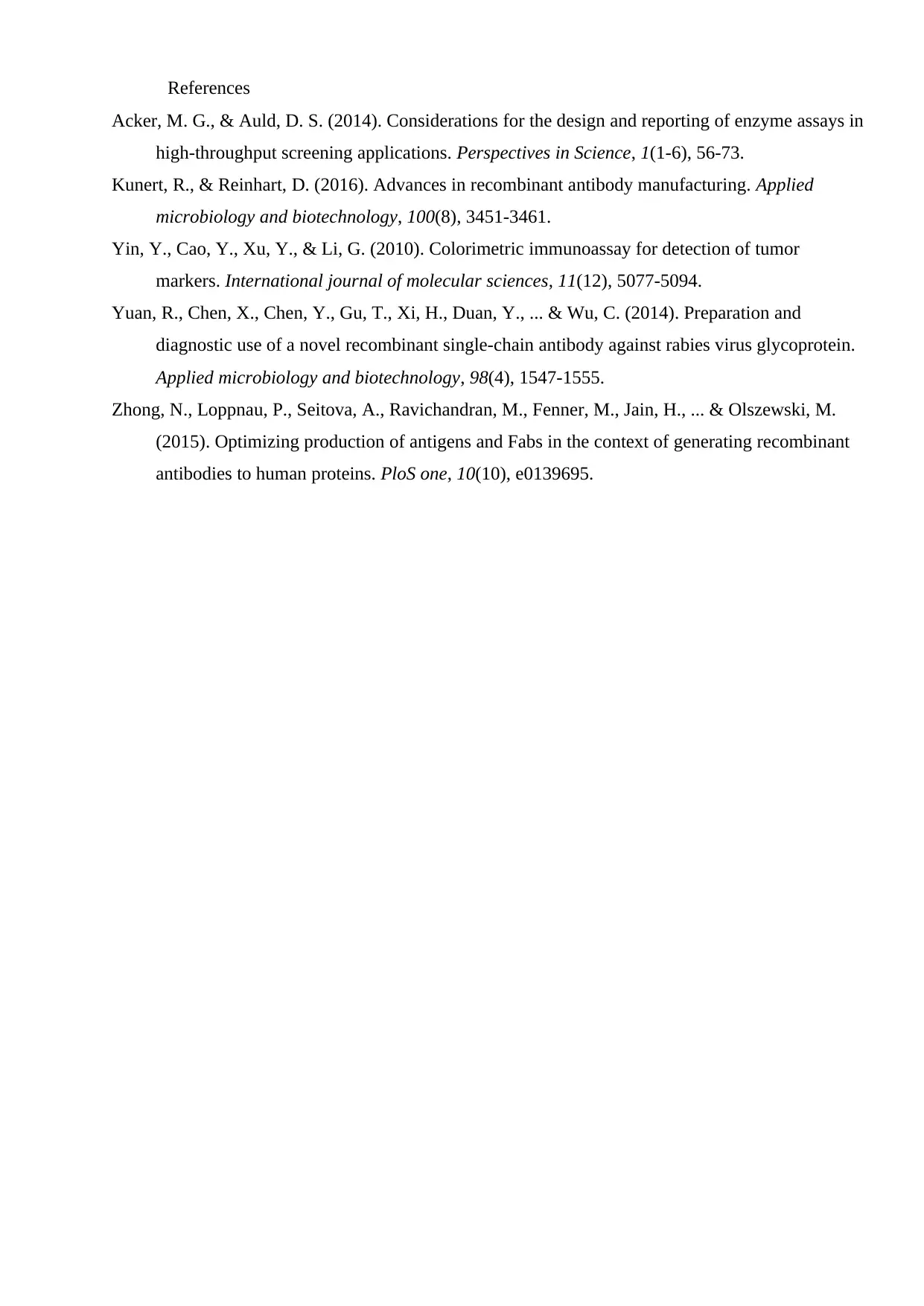Recombinant Antibodies, Immunoassay, Tumour Markers: A Review
VerifiedAdded on 2023/01/19
|2
|734
|35
Report
AI Summary
This report delves into the significance of recombinant antibodies, focusing on their production through gene recombination and their application in the medical and research fields. It highlights the importance of single-chain variable fragments (scFv) in immunoassay, particularly in targeting tumour markers for cancer diagnosis. The report also examines the role of tumour markers, which are substances produced in the body in response to cancer, and how they are used in conjunction with other techniques for cancer detection. Furthermore, the report addresses substrate selection in immunoassay development, emphasizing its crucial role in blocking, stabilization, and detection processes, which directly impacts the sensitivity, specificity, and overall performance of immunoassays. The selection of substrates affects kinetics, dynamic ranges, and timing, all of which are essential for producing reliable results.
1 out of 2


![[object Object]](/_next/static/media/star-bottom.7253800d.svg)